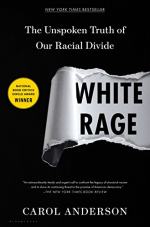|
This section contains 1,139 words (approx. 3 pages at 400 words per page) |

|
Summary
Chapter 3 is entitled “Burning Brown to the Ground.” Beginning in the 1800s, and continuing into the 1900s, Black Americans’ lives were consistently affected by racial segregation and oppression. An 1896 U.S. Supreme Court decision—in the case of Plessy v. Ferguson—stated that racial segregation was not unconstitutional. Under segregation, Black communities and institutions (such as schools) always received far less funding and government support than white communities and institutions. In the decades following Plessy v. Ferguson, the National Association for the Advancement of Colored People (NAACP) participated in many court cases to demonstrate these disparities. In the early 1950s, the case of Brown v. Topeka Board of Education made it to the U.S. Supreme Court, who then ruled that segregation was inherently unequal and unconstitutional, specifically in the public school system. In the time leading up to this case and this decision...
(read more from the Chapter 3 Summary)
|
This section contains 1,139 words (approx. 3 pages at 400 words per page) |

|




